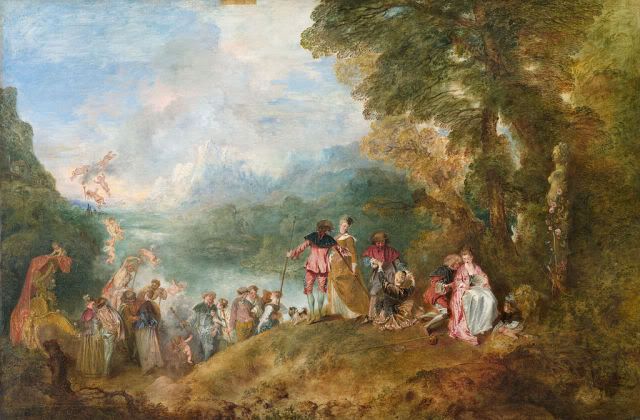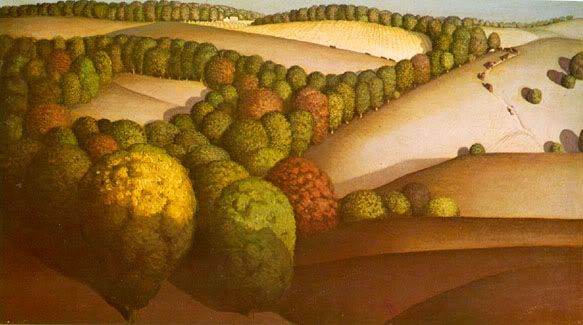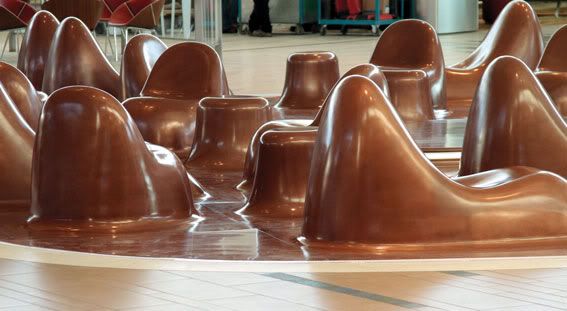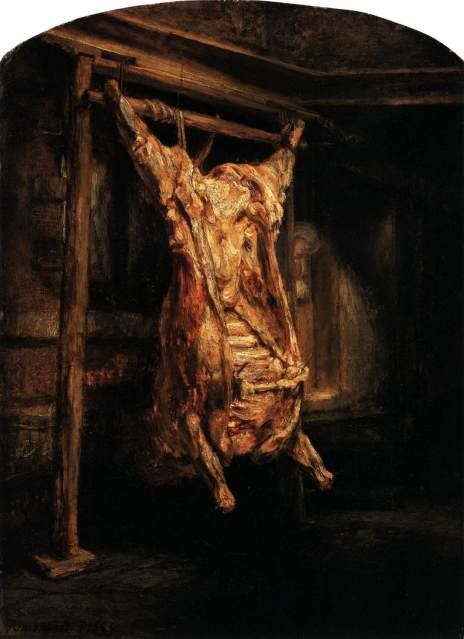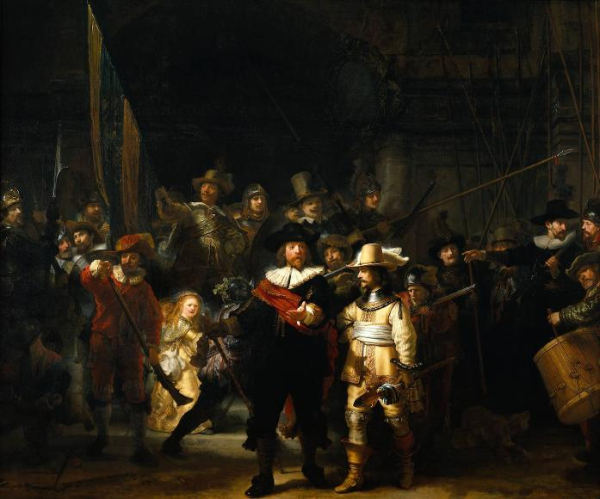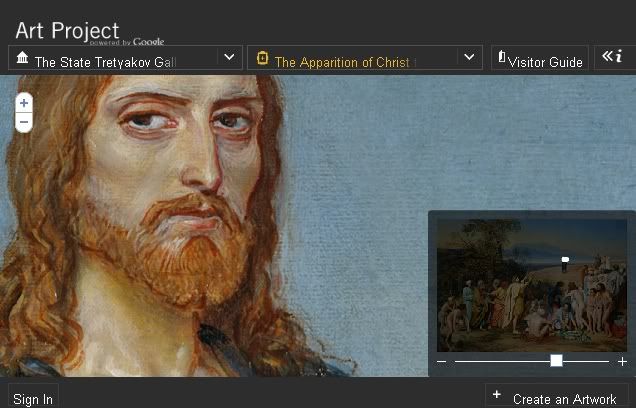This blog has been on a bit of an unofficial hiatus for more than 4 years. I have changed a lot since when I began this blog back in 2007. Over the past years I have gotten married, finished grad school, had two amazing daughters and become a full time homemaker. I love my life and I love blogging, but my interests have changed along the way. I still find the arts and crafts movement fascinating, but I've also become enamoured with some subjects that are definitely a bit off topic.
When I started this blog, I was determined that the Earthly Paradise would be a fairly narrowly focused blogs that would provide readers with in-depth discussions of the Arts and Crafts movement. Nine years later, there are so many wonderful blogs that do an amazing job at serious art history! The problem for me is that (at least for the moment) it's not where my heart is. And I think until I come to terms with the fact that I want to write about more divergent topics, I won't be writing at all, which would be a shame (at least from my perspective!), since it's something I really miss. I love interacting with the people that I've met though this blog, but I don't think I'll be comfortable doing so until I give myself permission to write about the things that really interest me right now.
Anyway, I'm back to blogging, albeit on a very different topic. Over the past year or so, I've begun eating a plant based diet. Initially, I was vegetarian, but have since gone vegan. It's been a wonderful experience. I read once that you are happiest when you get to live according to your values, and I think that's been very true of my experience with going vegan.
My interest in being vegan is very much ethically based, although I know that many people become vegan for health reasons. Because of my interest in the ethics of using animal products, I'm also eliminating animal products from my wardrobe, and I've been having a lot of fun finding beautiful, luxurious, alternatives. And since I love to dine out, I've also been discovering the best places for vegan dining.
If you followed me in the past, and you've wondered where I've been, I'm writing now at ModVegan.com, and you can also find me on my YouTube channel, ModVegan (the preview is above).
At this point, I would like to apologize to anyone that was subscribed to my blog when I briefly switched over to my own domain. After one year, the blog was purchased by someone that took all of my content and used it to create a spam site. I really hope it didn't affect you! My mom actually told me I should sue the other people, but I felt like it was best to just let it go. Sometimes those things are way more stress than they are worth.
So many of you were wonderful friends to me when I started this blog, and even though it's been a long time, I remember you all very fondly. I hope that you are still blogging!
Thanks so much! Very best wishes to you all!
Thursday, April 21, 2016
A new beginning
Posted by
Margaret
at
2:27 PM
0
comments
![]()
![]()
William Morris and Steve Jobs
As I've been savouring Walter Isaacson's biography of Steve Jobs, I'm often struck by some of the parallels between Steve Jobs and William Morris, and the similarity of their visions.
I am not alone in this. Perhaps most notable is Mukul Kasavan's article The Apple of Our Eye. In the piece, the author argues "that Apple is the lineal descendant of the Kelmscott Press", but concludes that Morris would have been disappointed with Apple products being produced in "Chinese sweatshops" (that's probably true). It's a great read, though I disagree with the author's conclusion that Steve Jobs would have somehow disappointed William Morris.
I think Morris would have been thrilled to see an innovator with a vision taking on the establishment. After all, Morris himself was not above a bit of hypocrisy. Those of us who are more familiar with William Morris' entrepreneurial endeavours will recall that Morris was often disappointed with the fact that he couldn't produce goods affordably while paying workers well. It was a constant source of frustration for him.
It's not easy to be an idealist in a real world. And in that respect, Morris and Jobs would have had a lot in common.
Posted by
Margaret
at
9:14 AM
0
comments
![]()
![]()
Labels: steve jobs, technology, william morris
Thursday, May 24, 2012
Adventures in French Bread
These days there are two schools when it comes to homemade french bread: knead and no-knead. Personally, I rather like kneading bread, so at first I didn't quite get the point of no-knead bread, which was all the rage a few years ago, thanks in part to an article Jeffrey Steingarten wrote for Vogue Magazine. I mentally filed it away under "I have to try this someday" and didn't think much more of it.
Fast forward a few years later, and I am now a compulsive bread baker, thanks in part to my two year old, who is enchanted by everything that goes on in the kitchen. She insists on helping me prepare every loaf. In the past we've primarily stuck to an oat sandwich bread that's a breeze to make.
We probably could have gone on happily making sandwich bread for eternity, were it not for an episode of "The French Chef" that got our creative juices flowing. My daughter's eyes lit up like a Christmas tree when she saw Julia Child making baguettes. She leapt off the floor and pointed excitedly at the screen, shouting "pan! Pan!" (we have a bilingual home, and she prefers the Spanish "pan" to the unromantic English "bread"). Despite my reservations, what could I do?
As a home baker, I've always been a bit leery of french bread, which I've always been told requires a baker's oven. But if Julia Child, armed with nothing more than a turkey baster (this seems like a very inefficient method of getting the dough wet, but I think she just wanted to let people know you could do it with anything - she also brandished a "flit gun" for spraying the loaves, something I've never seen before in my life. Apparently it was originally used for insecticide. Yikes.), so could I. So, after watching the episode a half dozen more times (and getting the recipe from Mastering the Art of French Cooking, Vol. 2), my daughter and I set to work.
I have a tendency to adjust recipes as I go along. For example, Julia calls for 2 teaspoons of yeast, which is just RIDICULOUS, unless you happen to live in Antarctica. Edmonton is practically at the Arctic circle, and I managed to use 1 teaspoon active dry yeast (I can't stand bread that tastes like yeast. I'm also cheap, but more on that later). I also added nearly 1/2 cup of extra water, because I think bleached flour absorbs more liquid and I tend to flour my kneading surface more than Julia does.
The bread turned out perfectly, but it took at least 9 hours, which is a bit of a challenge with two toddlers under foot, both of whom are desperately waiting to try the bread. Afterwards, I swore to myself I would just buy french bread from a bakery! But the results were delicious, and both of my kids were addicted almost immediately. My eight-month old now insists that every meal begin with bite-sized bits of french bread! What's a busy mom to do?
Then I remembered the whole "no-knead" concept. But most of the no-knead recipes want you to bake the bread in a dutch oven, and I don't really like that idea. It seems a bit lazy and my toddler loves to shape the dough. I started wondering if there was a way I could combine the recipes to create an easy recipe that wouldn't take all day to make.
A quick internet search and I had discovered several plausible sounding recipes. (The big problem was that none of them had enough salt. Julia's bread called for 2 1/4 teaspoons, and I wouldn't want to reduce the salt content by much, unless you have high blood pressure, etc.). Of course, I have perfected my own version, which follows.
The Recipe:
1/4 tsp active dry yeast
scant 2 cups warm water (1 5/6 cups if you want to be precise)
3 cups flour, plus extra for kneading (I know it's "no-knead", but I'll get to that later)
2 tsp salt
Part 1. The night before.
Begin by dissolving the yeast in the warm water. Let it sit for at least 3-4 minutes.
While the yeast is getting friendly, place 3 cups of flour in a bowl large enough to allow the mixture to expand to 3 times its bulk (about 10 1/2 cups - Julia recommends filling the bowl with water to know the precise level at which the dough has expanded to 3 1/2 times it's original bulk). Add 2 tsp of salt to the flour and mix.
Stir in the yeast and water mixture until well incorporated. Scrape the sides of the bowl and cover with plastic wrap. Then cover the plastic wrap with a damp towel.
Allow to rest for 12-14 hours (I do this before going to bed, so that it's ready to go after breakfast the next morning).
Part 2. In the morning.
Prepare your work surface with enough flour to prevent the dough from sticking.
Uncover the dough. It should have tripled in bulk and be bubbly and rather sweaty looking.
Using a spatula, turn the dough out onto your work surface. Allow it to rest for a moment while you wash out the bowl - you'll be needing it again in a moment.
Flour the palms of your hands and sprinkle some flour over the surface of the dough. Knead the dough 4-5x, just to squeeze out the air bubbles. Flatten it into a circle and squeeze out all the large bubbles of air. Fold the dough in half, and then in half again. Try to make it look a bit rounded (Julia says it should like a "rounded cushion"), and return it to the clean bowl. Cover it with the plastic wrap and towel and let it rest for 2 more hours.
Part 3. Shaping the dough.
By now the dough should be looking all bubbly again. Turn it out onto your floured working surface. Once again, flatten it into a circle and squeeze out the bubbles.
You can shape the dough however you'd like, but I prefer a long single loaf, which is done by folding the dough in half lengthwise. First you fold the far side to the center, and then you bring the near side of the dough to meet it in the middle (sort of like you're making an envelope). This part isn't really all that critical, but you will want to make sure it rises seam-side down, unless you want it to look funny.
Part 4. The final rise.
The next step is where I differ from pretty much every baker out there. Everyone - and I do mean everyone - insists that your french bread must rise on floured towels. This is nonsense, and messy to boot. I firmly believe it should rise on the surface you'll be baking it on. (Leave a comment if you think I'm crazy, but I've had amazing success with this method).
After shaping the dough, I pick it up off the counter and put it on a parchment covered baking sheet, seam side down. If you are making baguettes, which won't fit in a standard oven anyway, then you might need to use towels, but for any other shape, your hands will work just fine, and you can arrange the dough a bit once it's on the baking sheet.
Sprinkle a light dusting of flour on the surface of your dough and cover with plastic wrap, followed by a wet towel. Allow to rise for 1 1/2 hours, or until it has increased 2 1/2 times in bulk. After 1 hour, pre-heat your oven to 450 degrees Fahrenheit.
Part 5. Scoring.
The signature cuts on the surface of french bread are both beautiful and useful. They allow the dough to expand just a little bit more! To create them, slice through the top layer of the dough using a sharp knife. I strongly suggest using a utility knife (obviously a clean one that isn't covered in plaster!). Wet it with warm water first, and it will cut cleanly and easily through the dough (plus it's a lot easier to hold than a razor blade!!).
Part 6. Baking.
You're almost there! Now we need to replicate the baker's oven as well as we can. This is done by spraying the dough with water, which allows the dough to rise a bit more during the beginning of the baking process. I use a standard spray bottle for this (obviously one that has never been used for cleaning products, etc.!). Spray the dough until the surface is wet, and then place it in your pre-heated 450 degree oven. Bake for 3 minutes.
After 3 minutes, remove the bread. Spray it again. Return it to the oven for another 3 minutes.
After 3 more minutes, remove the bread and spray it again. Return it to the oven and repeat the process after another 3 minutes.
The final time (to clarify, you spray at the 3, 6 and 9 minute marks), remove bread and spray again. Return to the oven and bake for 16 more minutes, for a total bake time of 25 minutes. You might want to rotate the baking sheet half way through if your oven is hotter at the back than the front. Be sure to allow the bread to cool completely (2-3 hours) before storing or cutting (my daughter usually grabs a hunk of it before then!).
After trying Julia Child's method vs. the "no-knead" way, I would say that the crumb is nearly identical (perhaps because I used 1/2 the yeast that Julia recommended). My "less-knead" bread is ever so slightly denser, which gives it more of an artisan quality, whereas Julia's recipe seems to yield Safeway-esque light loaves (sorry, Julia). Also, since I bake bread at least twice a week, I love that I can use 4x less yeast in the no-knead version. And because it only takes 4 hours on the day you bake it, the no-knead recipe gives me time to get out of the house in the afternoon, which, as Martha Stewart would say, is a "good thing"!
As a reminder, if at any point to baking you have an emergency on your hands (and with two little ones, this is always a possibility), you can always put the dough in the fridge and start again later (refrigeration just slows down the rising process). If you have a nine hour chunk of time to make bread, then use Julia Child's version, which can be found on page 55 of Mastering the Art of French Cooking, Vol. 2
As with all bread, I think repetition is the key to getting it perfect. I have baked bread at least once a week for the past three years, so I sometimes feel I have a "connection" with it (I swear my older daughter does too! She's been baking her entire life!). You start to get a sense of how moist the dough should be at every point in the process, and what it's texture should be, and that's when it really becomes second nature.
Has anyone else out there experimented with no-knead vs. traditional french bread? Do you have any tips to share?
Posted by
Margaret
at
12:54 PM
8
comments
![]()
![]()
Labels: baking, Julia Child
Friday, May 4, 2012
Art History Carnival May 2012
art history
Our first post is an examination of the "fête galante", which is "a genre of painting that portrays upper class society celebrating or enjoying outdoor gatherings and amusements." If the enormous popularity of PBS' Downton Abbey is any indication, this genre of art has certainly not lost its appeal. Lauren presents The Pilgrimage to Cythera captured the 18th century posted at Marie Antoinette's Gossip Guide to the 18th Century, saying, "This post takes a close look at Watteau's famous Pilgrimage to Cythera discussing the artist's technique and inspirations and introduces some unanswered questions left for the viewer to consider." I guess everyone enjoys a good "fête galante" and this post is a delightful exploration of the genre!
Helen Webberley presents ART and ARCHITECTURE, mainly: inter-war American landscapes: Grant Wood posted at ART and ARCHITECTURE, mainly, saying, "Last year I examined a series of landscape paintings that seemed to share nothing but their inter-war timing. Paul Nash, Eric Ravilius, Harry Epworth Allen, Reuven Rubin, Dorit Black and Rita Angus came from Britain, Australia, Israel and New Zealand.
These landscapes' boldly presented hills and roads emphasised their treatment as mass and form. And like cubist painting decades earlier, the mountains became interconnecting planes of varying depth. What about on the other side of the Atlantic? American artist Grant Wood (1891–1942) also painted bold landscapes, creating a sense of vast and easy movement. In evolving a style of artificial geometries, clean surfaces and relentless patterns, Wood was a true Art Deco painter!"
Susan Benford presents Rembrandt Paintings in the Rijksmuseum posted at Famous Paintings Reviewed - An Art History Blog, saying, "Rembrandt paintings are the most famous artwork in (and the indisputable pride of) Amsterdam's Rijksmuseum, dedicated to showcasing the best of the Dutch Golden Age...these four Rembrandt paintings - plus "Night Watch" - are some of the most outstanding artwork in the Rijksmuseum."
Mark White takes his readers on a scenic tour of some beautiful examples of how walking has been portrayed throughout art history in his piece Walking Back to Happiness: Walking and Art posted at whitemarkarts.
That concludes this edition. Submit your blog article to the next edition of art history carnival using our carnival submission form. Past posts and future hosts can be found on our blog carnival index page.
Technorati tags: art history carnival, blog carnival.
Posted by
Margaret
at
6:47 AM
7
comments
![]()
![]()
Labels: blog carnival
Saturday, April 28, 2012
Call for Submissions: May Issue of the Art History Carnival
The May edition of the Art History Carnival will be posted on Friday, May 4, 2012. You can submit articles for inclusion in the carnival until 48 hours before the issue is "released" (Wednesday, May 2, 2012).
What kind of blog articles will be included?
Posts covering all periods and art mediums are welcome, as are posts discussing art criticism, architecture, design, theory and aesthetics. All submissions will be carefully reviewed, so please, no spam.
What is a Blog Carnival?
According to Wikipedia, a blog carnival is "a type of blog event...similar to a magazine, in that it is dedicated to a particular topic, and is published on a regular schedule, often weekly or monthly. Each edition of a blog carnival is in the form of a blog article that contains permalinks links to other blog articles on the particular topic."
Blog Carnivals are a great way to help your blog reach a new audience and to make new friends in the blogosphere!
Who can submit?
Anyone, as long as you have a blog! And If you don't blog, you can submit one of your friend's articles (except they better be good--I'll be reading them!).
Can I host a carnival?
Absolutely! Please let me know if you'd be interested in hosting the next issue of the carnival.
How to submit articles
You have two options:
1. Use the submission form provided by Blog Carnival (this is easiest!).
2. Send me an email. Include the title and permalink URL of the post you are nominating for inclusion in the carnival, along with the name of the blog. Please put "Art History Carnival" in the title of your email to help me recognize it in my inbox!
One final thing to keep in mind:
To keep things current, posts should have been written after the date of the last Carnival. If a post is six months old, I won't be able to include it in the Carnival, no matter how fabulous it might be.
Thank you again for your participation, and please share the news with other bloggers!
Posted by
Margaret
at
10:59 AM
0
comments
![]()
![]()
Friday, April 27, 2012
Kopperscape by Karim Rashid at the Edmonton International Airport
The Edmonton International Airport has unveiled a brand-new public art installation created by internationally recognized Canadian Designer Karim Rashid. The piece is located in the US Departures lounge, which is especially exciting since that was formerly one of the most unexciting places in the airport.
From the EIA Website:
Influenced by Canada’s mountains, snow drifts and rivers, Kopperscape is a signature piece for EIA and a gathering spot for passengers travelling from Canada to the US. Kopperscape is a functional fiberglass sculpture that has seating for passengers and a performance stage for live entertainers.
I've been hearing rumours for some time that Rashid was working on something for our airport, but I was expecting wallpaper. This blew me away, although I was a bit disappointed by the color, which ironically was meant to be reminiscent of the Canadian penny, which is going to be phased out over the next six months. Nevertheless, the 10x10 meter installation is substantial and is an exciting piece of art for our city.
In an interview in the Edmonton Sun, Rashid discussed doing more Canadian projects. The interviewer suggets it might be because it's too expensive for Canadians to hire him. Rashid disagrees:
"I don't think it's about affording," he explains. "I think deep down Canada is still very conservative and they see me as this wild designer."
Rashid may be on to something - Canadians are quite conservative when it comes to their art (and clothes). Perhaps its the northern climate? Nevertheless, Edmonton has become increasingly bold lately when it comes to public art. The city has been enjoying openness to contemporary art, design and architecture following the enormous popularity of our Gehry-esque Art Gallery of Alberta (designed by Randall Stout).
My husband had a chance to see this piece of art, along with many others during a recent tour of the newly expanded Edmonton International Airport. He was especially taken with Michael Hayden's sculpture The Raven, which has been constructed out of "holigraphically-embossed acrylic and mirror polished stainless steel." The piece (shown below) is just one of many exciting new installations that are part of the airport's art program.
Images via flyeia.com
Posted by
Margaret
at
11:17 AM
1 comments
![]()
![]()
Labels: Edmonton, karim rashid, news
Wednesday, April 4, 2012
Art History Carnival April 2012
Welcome to the April edition of art history carnival! Spring is here for many of us (we still have a snowstorm scheduled to arrive in Edmonton tonight, but at least the days are getting longer!), and with Easter coming up this weekend, its certainly the time of year when we are reminded of death and rebirth.
Several of this carnival's posts tend towards the weightier side, and bring to mind some of the less pleasant aspects of the circle of life and of the violent world of our ancestors. I recently read Steven Pinker's The Better Angels of Our Nature: Why Violence has Declined . It's a truly fascinating book that examines why the world today is generally less violent than it was in the past. His argument is controversial because it flies in the face of many of the myths our society loves to perpetuate, such as the notion of a more peaceful/idyllic past, untarnished by the evils of mass consumerism and modern alienation (dear William Morris was the victim of that particular vision, I'm afraid).
Throughout my life I have known many people who profess to pine for the nasty, brutish and short lives of the martyrs. These people are well aware of the fact that medieval spirituality was informed by horribly violent culture that meant constant encounters with death and torture - and they miss it, because they think it would make them better people (personally, I'm inclined to think that it wouldn't, it would just make them more violent!).
At any rate, art history is filled with constant reminders of the lives of those who have gone before us. I, for one, am incredibly grateful to be living in the world of Google's Art Project, rather than that of Rembrandt's Night Watch or The Roettgen Pietà (pictured below)!
art history
As a historian, I have always been struck by the immediacy of death in Europe during the Medieval period. Death was everywhere, and people were intimately aware of its horrors in a way that we "moderns" find difficult to comprehend (with the possible exception of persons living today in areas entrenched in tribal warfare). Nowhere is this more evident than in the religious iconography from that time. Medieval religious art dwelt heavily on the graphic suffering of Christ in a way that seems extreme to us, but was part of everyday life to the people of that time. David Byron examines this phenomenon in greater detail in his post This Is My Body, found at Baroque Potion. I found his comparison of the Florentine and German portrayals of Christ's death particularly intriguing. He notes that while the "anonymous German elicited an emotional response by displaying exaggerated poses, wounds, expressions, and scale, the Florentine invites the viewer to consider the same thematic and theological antinomies without reference to the wretchedness of disproportion, death, and decay." I would be tempted to argue that this reflects the fact that, no matter how difficult life in Florence at the close of the Medici rule, it was rather worse in Germany, and this was reflected in their art!
In another somewhat grisly (or should I say, "gristly"? Oh dear, bad pun!), art historian Monica Bowen examines the use of meat in art and the relationship between "the “masculine” consumption of meat" and "the sexual consumption and objectification of women." It's a fascinating post, and the comments are definitely worth a read as well! (I love that she threw Lady Gaga in there for good measure).A Meaty Post posted at Alberti's Window.
"The art history behind "Night Watch", one of the most acclaimed Rembrandt paintings, continues to amaze. Not only is its nickname, "Night Watch", a misnomer, but also some art historians speculate that Rembrandt included himself in this masterpiece. That was before "Night Watch" was trimmed on four sides to fit into a new display space!" Susan Benford presents Rembrandt Paintings: Night Watch posted at Famous Paintings Reviewed.
Could this be a painting of Mary Magdalene? Francis DeStefano muses over the subject matter of Titian's "Flora" in his post Titian: "Flora" , on his blog Giorgione et al....
Google's Art Project has grown at an astounding rate and provides an incredible resource for art historians and anyone with an interest in art. Hasan Niyazi gives a fantastic update on the project in his post Google Art Project and the CED, posted at Three Pipe Problem.
architecture
Hels presents Iconic Sydney Harbour Bridge: 1932-2012 posted at ART and ARCHITECTURE, mainly, saying "like every other piece of architecture that came to dominate its city's skyline, the Sydney Harbour Bridge had a long and contested history. From architect Francis Greenway's first proposal in 1825, to the premier opening the completed bridge in 1932, the post examines the sourcing of raw materials, and the contribution of the architects, builders and public transport designers."
That concludes this edition. Submit your blog article to the next edition of
art history carnival
using our
carnival submission form.
Past posts and future hosts can be found on our
blog carnival index page.
Technorati tags:
art history carnival, blog carnival.
Posted by
Margaret
at
12:32 PM
5
comments
![]()
![]()
Labels: blog carnival



